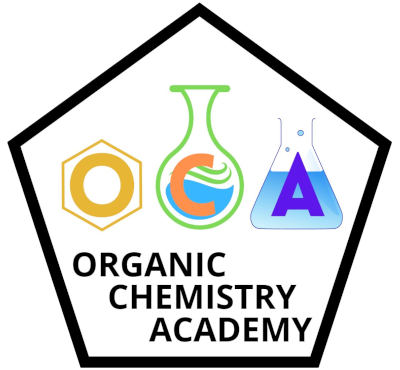Grignard reagents – those iconic, cloudy solutions of alkyl or aryl magnesium halides – represent a cornerstone of organic synthesis. For decades, they’ve provided chemists with a remarkably versatile tool for building carbon-carbon bonds, enabling the creation of complex molecules that would be difficult or impossible to construct using other methods. But what exactly are Grignard reagents, and why are they so effective? Let’s dive in!
At their core, a Grignard reagent is a highly reactive organometallic compound. It’s formed through the reaction of an alkyl or aryl halide (like methyl bromide or phenyl chloride) with magnesium metal in an ethereal solvent – typically diethyl ether or tetrahydrofuran (THF). This reaction generates a carbanion, stabilized by the magnesium ion, forming the Grignard reagent.
The key to their power lies in the carbanion’s extreme reactivity. This carbanion is a strong nucleophile and a strong base, readily attacking carbonyl groups, epoxides, and other electrophilic centers. This ability to form new bonds is what makes Grignard reagents such valuable synthetic intermediates. We’ll explore some common applications in the following sections.
Formation of Grignard Reagents
Imagine building a pharmaceutical molecule with incredible precision. One key tool in that arsenal is the Grignard reagent.
What are Grignard Reagents? Grignard reagents are organomagnesium halides, typically R-MgX where R is an alkyl or aryl group and X is a halogen (usually Cl, Br, or I). These compounds are exceptionally strong bases and, critically, possess the ability to form carbon-carbon bonds.
These reagents revolutionized organic chemistry and remain vital in numerous synthetic pathways. In this section, we’ll delve into the formation of Grignard reagents, their key reactivity, explore common reactions they participate in, and discuss some limitations to consider.
Reactivity and Common Reactions
Grignard reagents are powerful organometallic compounds utilized extensively in organic synthesis due to their ability to form carbon-carbon bonds. At their core, they are highly reactive alkyl or aryl magnesium halides – R-X + Mg → R-MgX, where R represents an alkyl or aryl group and X is a halogen (typically Cl, Br, or I).
Key Factors for Formation:
The formation of a Grignard reagent relies heavily on maintaining anhydrous conditions. Water reacts violently with the reagent, consuming it and preventing the desired reaction. This occurs through a process of protonation, ultimately leading to the destruction of the Grignard reagent.
Illustration: R-MgX + H₂O → R-H + Mg(OH)X
Solvents: Diethyl Ether (Et₂O) and Tetrahydrofuran (THF) are the most commonly employed solvents. These solvents effectively solvate and stabilize the Grignard reagent through coordination to the magnesium atom. While polar aprotic solvents like DMSO or DMF can be used in some cases, they are generally less effective at stabilizing the reagent and can lead to side reactions.
Example Formation:
The formation of methylmagnesium bromide (CH₃MgBr) is a classic example:
Mg(s) + CH₃Br(aq) → CH₃MgBr(aq)
Limitations and Considerations
Grignard reagents are renowned for their reactivity, but understanding their limitations is crucial for successful synthesis. Their power stems from their strong basicity and nucleophilicity, making them exceptionally effective at forming carbon-carbon bonds.
Reaction with Carbonyl Compounds:
- With Aldehydes: The reaction with aldehydes is generally clean and proceeds to form a primary alcohol. The mechanism involves the nucleophilic attack of the Grignard reagent on the carbonyl carbon, followed by protonation with dilute acid. For example: RMgX + R’CHO → R’CH(R)OMgX + H₃O⁺ → R’CH(R)OH
- With Ketones: Reactions with ketones are more complex. The presence of α-hydrogens allows for a competing elimination reaction, leading to alkene formation alongside the desired alcohol. The extent of this side reaction depends on factors like temperature and steric hindrance.
- With Esters: Grignard reagents react with esters to produce tertiary alcohols. This is due to the initial nucleophilic attack forming a magnesium alkoxide, which is then protonated to yield a larger, more sterically hindered product.
Other Reactions:
Grignard reagents can also participate in reactions such as the ring-opening of epoxides, and crucially, they serve as key components in the Wittig reaction, facilitating the formation of alkenes.
Conclusion
In summary, Grignard reagents represent a remarkably powerful and versatile tool within synthetic organic chemistry. However, their utility hinges on meticulous technique due to their extreme sensitivity to moisture and air. Any trace of water or oxygen will rapidly destroy the reagent, necessitating rigorously anhydrous conditions and inert atmospheres.
Furthermore, several potential side reactions demand careful consideration. Wurtz coupling, the self-coupling of the Grignard reagent to form dimers or oligomers, can significantly reduce yield. Additionally, Grignard reagents are notorious for their ability to reduce carbonyl compounds like aldehydes and ketones, leading to unwanted alcohol formation.
Finally, functional group compatibility is paramount. Generally, Grignard reagents react smoothly with halogens and nitro groups. Conversely, functional groups such as carboxylic acids and amines are typically incompatible and must be protected or avoided entirely. Understanding and mitigating these potential pitfalls are crucial for successfully employing Grignard reagents in complex synthetic schemes.
